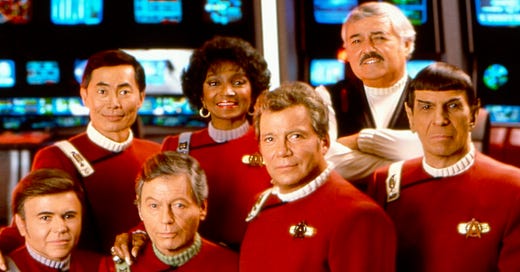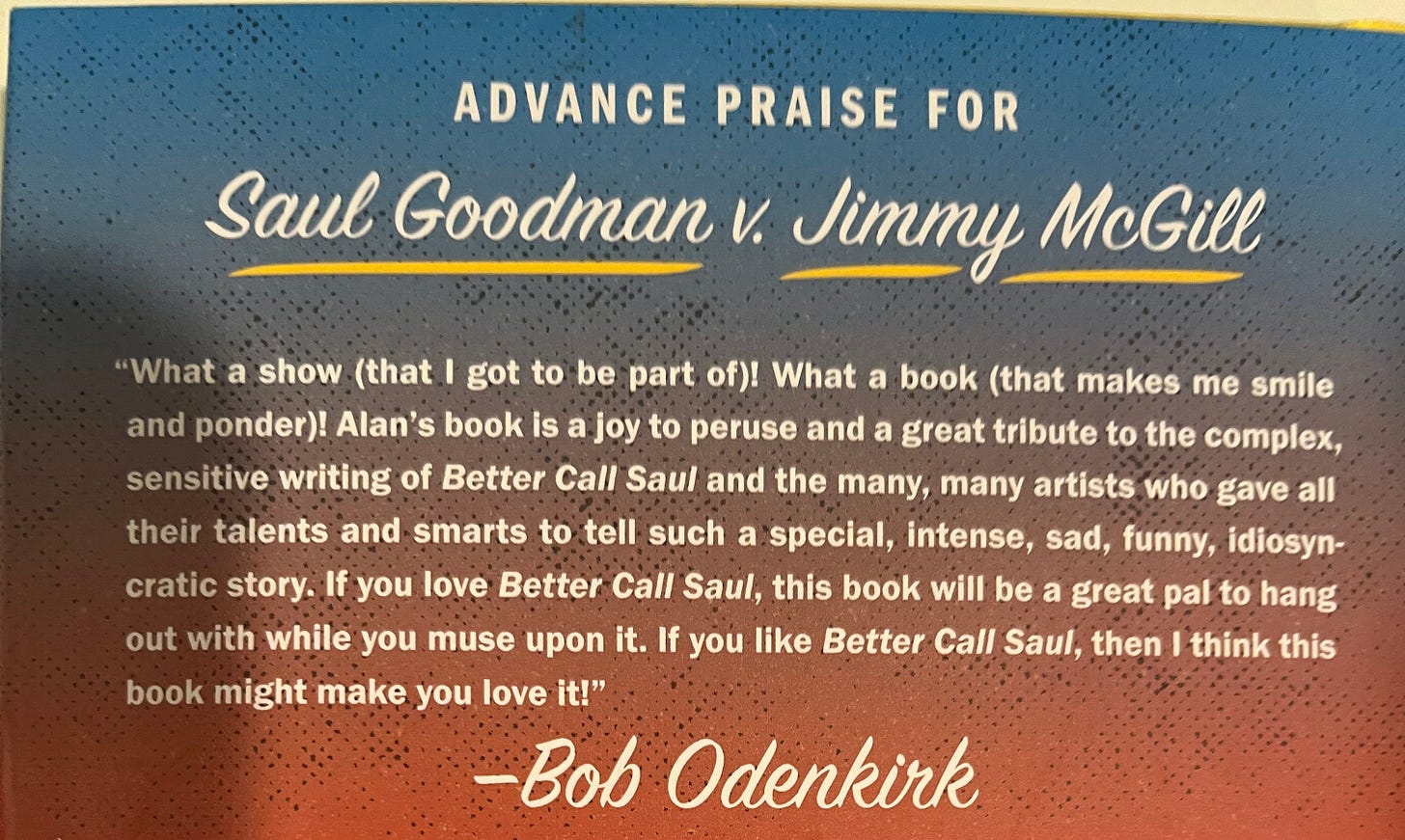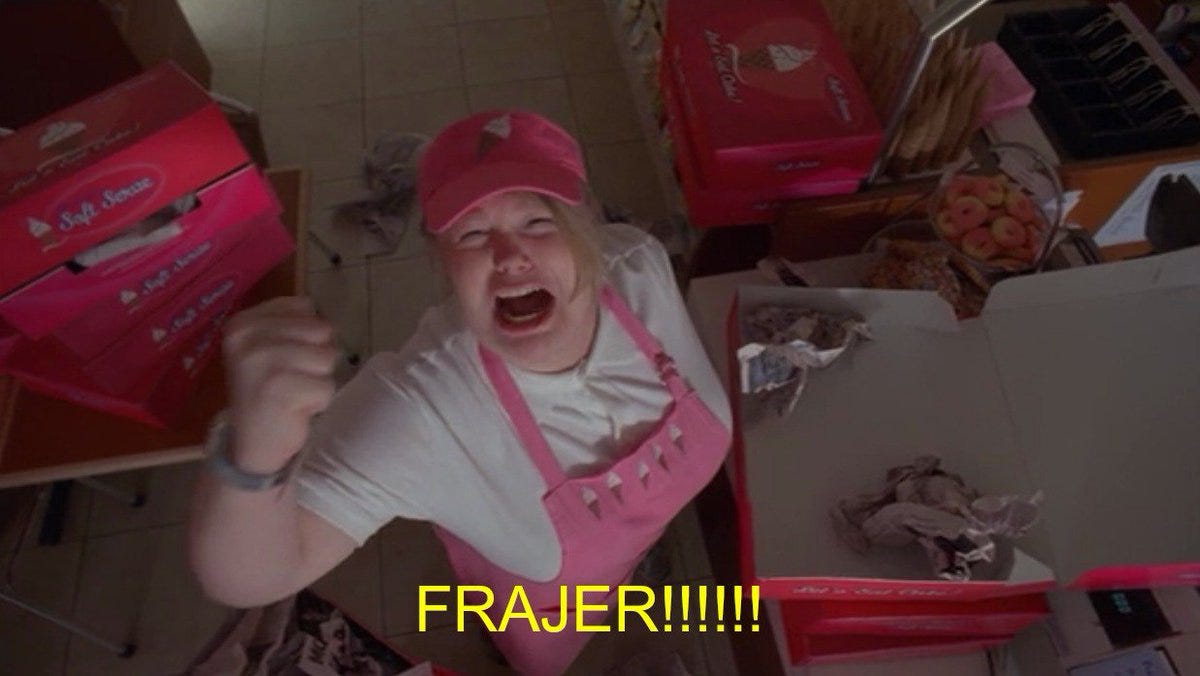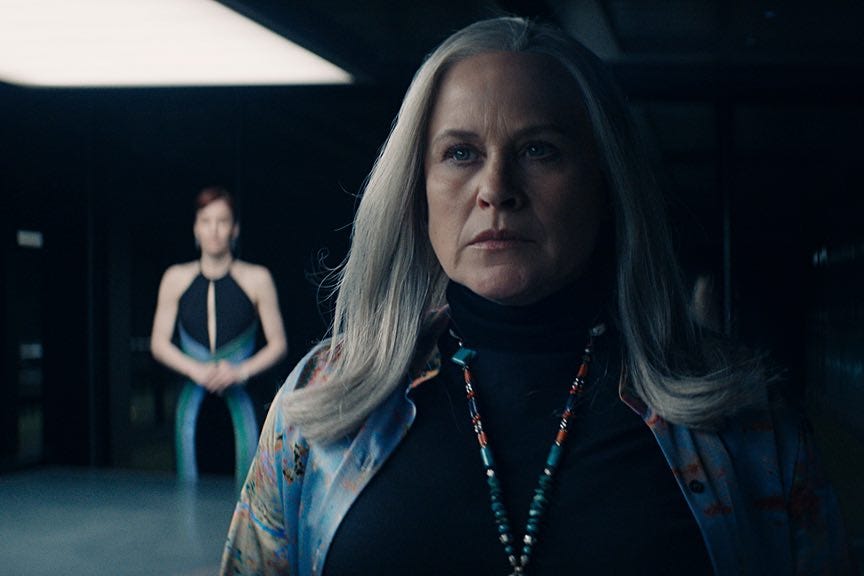These are the movie voyages of the starship Enterprise
Ranking the 'Star Trek' films, plus 'Severance,' my 'Better Call Saul' book gets closer, and more
This week’s What’s Alan Watching? newsletter coming up just as soon as I bring you a pineapple basket…
To boldly go to the movies
This week, Paramount+ debuted Star Trek: Section 31, a straight-to-streaming movie starring Michelle Yeoh’s character from Star Trek: Discovery. At one point, it was meant to be an ongoing series, but between the pandemic, Yeoh’s hectic schedule post-Everything Everywhere All At Once, and various other 21st century issues, it was instead turned into a film. (Albeit one that leaves the door open for potential sequels.)
Section 31 is no great shakes, and only vaguely feels like Star Trek, rather than a Mission: Impossible/Guardians of the Galaxy mash-up, though parts of it are fun. But I saw its debut as an excuse to do one of my favorite impossible things: ranking works of art in numerical order! In this case, I ranked every Star Trek film — whether featuring the original William Shatner crew, the gang from Next Generation, the Chris Pine reboot bunch, or this tangent into a relatively obscure corner of the Federation — from worst to best.
The number one pick will likely surprise none of you. The hardest part was sorting out the order of the next three (a weekend rewatch of a few led to a last-minute swap of the third and fourth-ranked films), and to a degree figuring out in what order to place the obvious three bottom films. As with almost any list of this sort, there are things that would be slightly different if I’d turned it into my editor a day later or earlier, but I feel satisfied with the broader tiers of it. There’s one great film, several excellent ones, a bunch that range from mediocre-to-good, and then a few heinous ones that completely misunderstood the assignment.
So go read the thing, and then proceed to yelling at me by email or in the comments.
Take off that space blanket (and get ready to read)
We are now exactly 11 days from the release of Saul Goodman v. Jimmy McGill: The Complete Critical Companion to Better Call Saul. You probably don’t need to be reminded that you can still preorder it wherever books are sold, and that I’ll doing events at The Strand in New York on February 5 and at Words in Maplewood, NJ on February 6.
I was very gratified to see Goodman v. McGill (the easiest way to shorten the title, I suppose) make The AV Club’s list of the year’s most anticipated books. As discussed last week, an Abrams shipping mix-up means that some of you already have copies in your hands, and I hope you’re enjoying them.
Meanwhile, it’s been a busy-ish stretch for some key Saul alums. The Writers Guild of America just announced that Vince Gilligan will be receiving the Paddy Chayefsky Laurel Award for Television Writing Achievement, named for one of the giants of television’s first Golden Age, to be presented at the WGA Awards on February 15 — a week after the 10th anniversary of Saul. (And a week and a half after the release of Goodman v. McGill.) Meanwhile, Bob Odenkirk is in one of the documentaries Peacock made for the 50th anniversary of Saturday Night Live, talking about his stint as a writer during the Phil Hartman era. Oh, and Bob has a thought or two about the book, if that might help put you over the top to buying:
Odds and/or ends
A few hours after last week’s newsletter published, Paramount+ canceled the Frasier revival. CBS Studios says it will try shopping it elsewhere. The fact that the Nineties series is streaming in multiple places, including Hulu and Prime Video, means it’s not impossible. But it doesn’t seem likely. It really is impressive how high the failure percentage is with these unnecessary sequel series, nearly all of which — Frasier included — can’t recreate the magic of the original run. (Notable exceptions: Party Down, Twin Peaks: The Return, and Roseanne/The Connors.) Yet familiar IP will continue to give these projects a leg up over original ideas, unfortunately.
I’ve really been enjoying Pop Culture Jeopardy! as a game, with two caveats: 1. The Triple Play doesn’t really work so far as a new addition, in part because the math of it isn’t always clearly articulated; and 2. Colin Jost is way too snarky for the job, especially given the success rate of most of his quips. I don’t know that the job requires quite the same level of reverence as the Jeopardy! flagship show, but Alex, Ken, and even Mayim all came across with a fundamental level of affection for the game itself, and generally for the contestants. Jost just seems annoyed by all of it.
Notable The Pitt things this week: 1. The real time gimmick pays an excellent comic dividend, as last week’s running gag about Robby being unable to find an opportunity to pee pays off here with him realizing he can finally do it in the aftermath of a panic attack sending him to the men’s room. (The panic attack, by the way, evokes several post-stabbing scenes for Dr. Carter on ER.) 2. The subplot about the stolen ambulance doesn’t necessarily require the show to take place in real time, but it was still an amusing bit of color, and a way to establish the emergency department as a workplace that feels real outside of the specific cases we’re following. 3. The show leans further into the Pittsburgh of it all by revealing that the dying old man was a set designer for Mister Rogers’ Neighborhood, the iconic PBS kids show produced in Pittsburgh. That said, I feel like any kid growing up there whose dad worked for Fred Rogers would have bragged about it every chance she got, rather than acting embarrassed by it, as plays out here. 4. How you know we’re not on NBC anymore: when the oft-discussed Kraken finally wakes up and unloads his bladder on poor Whitaker, we get full-frontal nudity of the unpleasant event.
Severance talk: “Goodbye, Mrs. Selvig”
Finally, it’s Severance recap time again. I wrote about the season’s second episode, which function as a mirror image of the premiere, offering the outies’ perspective on events we just saw the innies go through. As I note in the recap, there’s a risk in this kind of maneuver feel like unnecessary throat-clearing — think about how the Lost Season Two premiere spent its first several episodes showing how different characters all wound up colliding at the hatch — but I think it was both interesting and important here.
There really wasn’t any discussion of the premiere in last week’s comments, so either most of you aren’t watching, or the newsletter comes out well before those of you watching get to each episode, and by the time you get to it, the window to talk seems closed. If it’s the latter, let me know, and maybe I’ll start a weekly Severance chat on Mondays?
That’s it for this week! What did everybody else think?









Really impressed with the discipline of the Severance writers not to string out uninteresting (or less interesting) mysteries unnecessarily like so many shows do. The time lapse/five months, what happened to the Outies, whether there was really a public revolution, etc. Set up in episode one, address adequately in episode two in a way that actually moves the plot and allows it to move forward organically but keeping the larger puzzle box mysteries alive.
I had a different read on Jost. He seemed like a waiter who was trying a little too hard to entertain the table, because they told him it was grandma’s birthday.